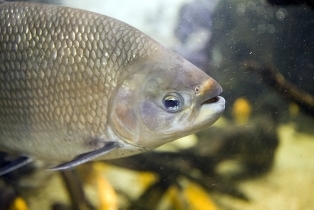After many experiments carried out by several scientists, Louis Pasteur finally managed to prove the Theory of Biogenesis, in which life originates from a preexisting one. With the acceptance of biogenesis, another question began to haunt scientists at the time: “If living beings originate from another preexisting one, how did the first living being originate?”.
Although we don't have an accurate picture of the most primitive living beings, we can imagine that they were microscopic, enveloped through a membrane and that in its interior there were several chemical reactions that were ordered and controlled by information genetics. These reactions transformed the food, on which these living beings fed, into components of their bodies, which allowed them to grow and reproduce. But you must be asking yourself: what did these living beings feed on? As this is also an issue that divides the opinion of scientists, two hypotheses are accepted, the heterotrophic hypothesis and the autotrophic hypothesis.
heterotrophic hypothesis
As we said earlier, primitive living things are believed to be very simple, as are the chemical reactions in their cells. For this reason, scientists believe that these organisms had saprobic nutrition, that is, they got their food by absorbing molecules simple organic elements of primitive seas, since the production of food itself involves the ability to produce substances, which these organisms do not. presented.
In this primitive atmosphere there was no oxygen, and, therefore, these primitive organisms had to extract energy from the food molecules through mechanisms simpler than the fermentation, which is currently carried by some fungi and bacteria. With the large food supply, these organisms gained energy and were able to reproduce, but over time, food became scarce for the number of organisms. In this way, a competition would have started, leading to the death of many organisms. According to the defenders of this hypothesis, at that time, some living organisms would have already evolved to the point that were already able to capture the light energy of the sun and use it to produce organic molecules used as food.
Do not stop now... There's more after the advertising ;)
Autotrophic Hypothesis
Proponents of this hypothesis believe that on the early Earth there was not enough organic matter to support the multiplication of the first living beings until the appearance of photosynthesis. They also defend that living beings arose in more protected places, such as the floor of primitive seas, since the earth's surface was very unstable. According to these scientists, the first living organisms were chemolithoautotrophic, that is, they produced their food from the energy released by chemical reactions between inorganic components, such as sulfur and iron compounds.
This possibility was consolidated after the discovery of life in the underwater hot springs, which are found at the bottom of the oceans. Many bacteria that live in these places are autotrophic, but they carry out a different process than photosynthesis.
According to this hypothesis, from the first chemolithic autotrophic beings emerged beings that carry out the fermentation, then the photosynthesizing beings, and finally the aerobic beings (which carry out the breathing).
By Paula Louredo
Graduated in Biology
Would you like to reference this text in a school or academic work? Look:
MORAES, Paula Louredo. "Life forms on Earth"; Brazil School. Available in: https://brasilescola.uol.com.br/biologia/formas-de-vida.htm. Accessed on June 27, 2021.


